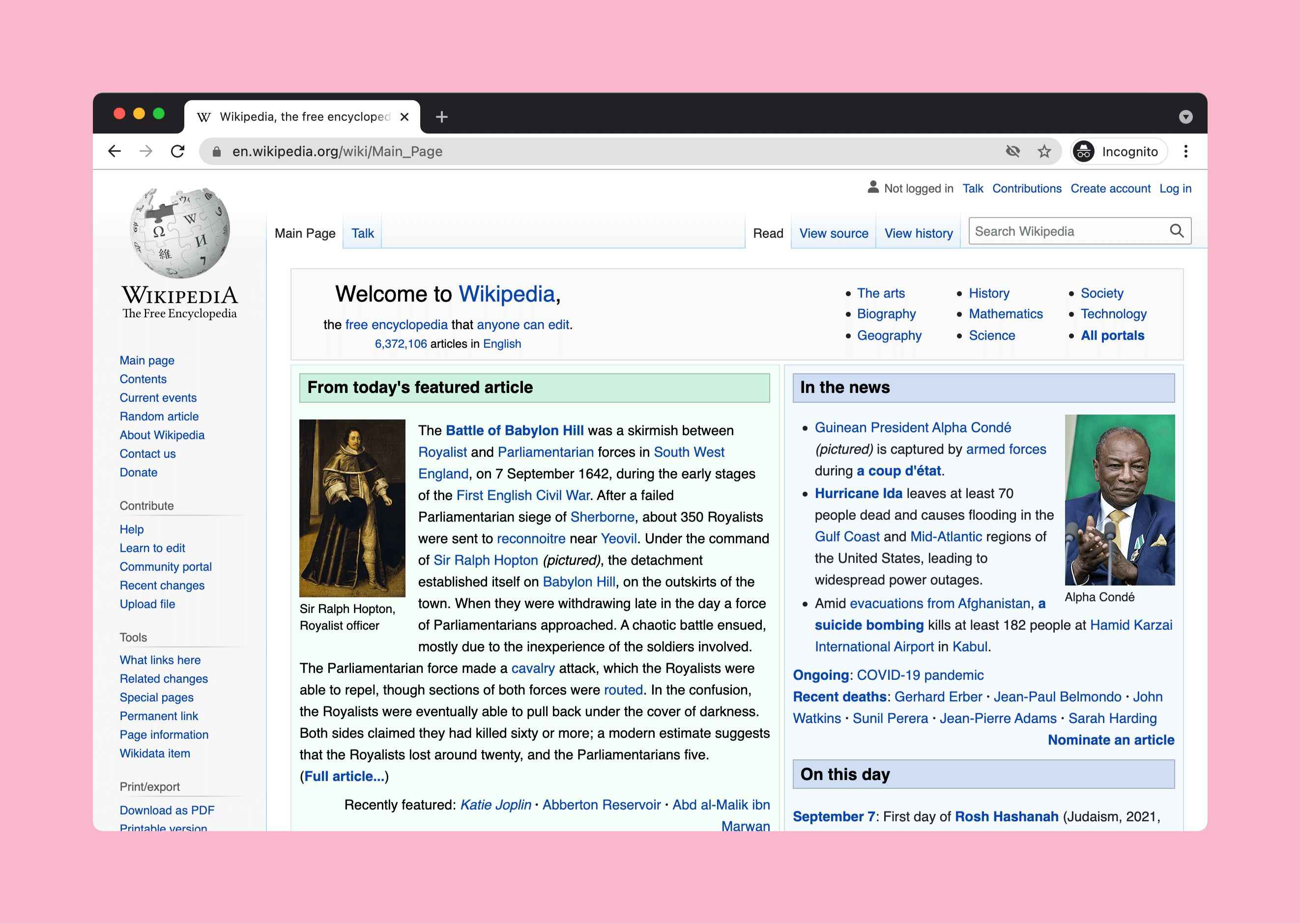Introduction
Welcome to the world of crowdfunding! In today’s digital age, the traditional methods of financing a project or venture have been revolutionized. Crowdfunding has emerged as a popular alternative that allows individuals and organizations to raise funds from a large pool of people through online platforms. This innovative concept brings together investors, donors, and supporters who are passionate about supporting creative ideas, charitable causes, and entrepreneurial ventures.
With crowdfunding, individuals and organizations can showcase their projects or initiatives to the global community and invite them to make financial contributions. This approach has opened up new avenues for artists, entrepreneurs, inventors, and non-profit organizations to bring their ideas to life.
How does crowdfunding work? What are the different types of crowdfunding? What are the benefits and risks involved? In this article, we will explore the intricacies of crowdfunding, its various types, and provide valuable tips for running a successful campaign.
Moreover, we will delve into the importance of choosing the right crowdfunding platform and discuss its relevance for non-profit organizations. By the end of this article, you will have a comprehensive understanding of crowdfunding and be equipped with the knowledge to embark on your own successful crowdfunding journey.
How Does Crowdfunding Work?
Crowdfunding operates on the principle of collective support. The process typically starts with an individual or organization pitching their idea or project on a crowdfunding platform. They provide a detailed description of their project, including its purpose, implementation plan, and funding goals.
Once the project is live on the platform, it is visible to potential backers who browse through the projects and decide whether or not to contribute. Backers can make financial contributions of varying amounts, depending on the platform’s guidelines and the campaign’s structure.
Most crowdfunding platforms operate on an “all-or-nothing” model, where the project must reach its funding goal within a specified time frame in order to receive the pledged funds. If the goal is not met, the project does not receive any funds, and the backers that pledged contributions are not charged.
Crowdfunding campaigns often offer rewards or incentives to entice backers to contribute. These rewards can range from a simple thank-you note or a mention in the project credits to more substantial offerings such as early access to products, exclusive experiences, or merchandise related to the project.
Throughout the campaign, project creators maintain regular communication with their backers to keep them updated on the project’s progress and any developments. Depending on the platform, creators may also have the option to offer equity or revenue sharing in exchange for larger investments.
Once the campaign reaches its end and the funding goal is met, the project creator receives the pledged funds (minus any applicable platform fees). With the funds in hand, they can now set their plans into motion and work towards bringing their project to fruition.
The crowdfunding process is not only about raising funds but also about building a community and gaining support. Backers often become advocates for the project, spreading the word and helping it reach a wider audience. This community-building aspect is a crucial part of the crowdfunding experience.
Different Types of Crowdfunding
Crowdfunding has evolved over the years, giving rise to various types and models that cater to different projects and goals. Here are some of the most common types of crowdfunding:
- Reward-based Crowdfunding: This is the most popular and traditional form of crowdfunding. In reward-based crowdfunding, project creators offer a range of rewards or incentives to individuals who contribute to their campaign. These rewards can be tangible goods, such as merchandise or early access to products, or intangible rewards like personalized thank-you notes or experiences related to the project.
- Equity-based Crowdfunding: Equity-based crowdfunding allows individuals to invest in a project or business in exchange for equity or shares. This type of crowdfunding is often used by startups and early-stage companies seeking capital. Investors become partial owners of the company and may receive a share of the profits if the venture succeeds.
- Donation-based Crowdfunding: As the name implies, donation-based crowdfunding is geared towards charitable causes and non-profit organizations. Individuals and organizations raise funds for a specific cause or social initiative without offering any financial returns to the donors. Donors contribute out of a sense of philanthropy or to support a cause they believe in.
- Debt-based Crowdfunding: Also known as peer-to-peer lending, debt-based crowdfunding involves individuals lending money to others in need, typically with interest. This type of crowdfunding is often used by individuals seeking personal loans or small businesses in need of funding. Investors receive their principal amount plus interest over a specified period of time.
- Real Estate Crowdfunding: Real estate crowdfunding enables individuals to invest in real estate projects, such as residential or commercial properties, through online platforms. Investors can contribute small amounts and diversify their investment portfolio across different properties, mitigating risks and gaining exposure to the real estate market.
These different types of crowdfunding provide a range of options for project creators and investors, catering to diverse needs and objectives. Understanding the nuances of each type and selecting the most suitable approach is essential for running a successful crowdfunding campaign.
Benefits of Crowdfunding
Crowdfunding offers numerous benefits to both project creators and backers alike. Here are some of the key advantages of crowdfunding:
- Access to Capital: One of the main benefits of crowdfunding is the ability to access capital that may otherwise be difficult to obtain. Traditional financing methods, such as bank loans or venture capital, may have strict criteria and require a proven track record. With crowdfunding, individuals and organizations have the opportunity to present their ideas and gain financial support from a wide audience.
- Validation of Ideas: A successful crowdfunding campaign can serve as proof of concept and validate the market demand for a product or project. By garnering support and funds from backers, project creators receive valuable feedback and affirmation that their idea resonates with the target audience. This validation can boost confidence and attract additional interest from investors or potential business partners.
- Building a Community: Crowdfunding helps to build a community around a project or cause. Backers become more than just financial supporters; they become advocates and enthusiasts who spread the word and share their passion for the project. This sense of community not only creates a strong support network but can also lead to valuable connections, partnerships, and future collaborations.
- Market Exposure: Crowdfunding platforms provide a global stage for project creators to showcase their ideas. By promoting their campaign on these platforms, individuals and organizations gain exposure to a wide audience of potential customers, investors, and media outlets. This increased visibility can generate buzz, attract attention from industry influencers, and open doors to new opportunities.
- Flexibility and Control: Crowdfunding offers flexibility and control over the fundraising process. Project creators have the freedom to set their funding goals, select the duration of the campaign, and determine the rewards or incentives offered to backers. This level of control allows creators to tailor the campaign to their specific needs and adjust strategies based on real-time feedback and market conditions.
- Collaboration and Feedback: Crowdfunding encourages collaboration and fosters a sense of co-creation between project creators and backers. Backers have the opportunity to provide valuable feedback, suggestions, and insights as the project progresses. This feedback loop can help refine the idea, improve the product, and ensure it meets the expectations and needs of the target audience.
Crowdfunding offers a range of benefits that go beyond just raising funds. It provides a platform for innovative ideas to come to life, encourages community engagement, and enables individuals and organizations to achieve their goals with the support of a global network of backers.
Risks of Crowdfunding
While crowdfunding offers exciting opportunities, it is important to be aware of the potential risks involved. Here are some of the risks associated with crowdfunding:
- Unsuccessful Campaigns: Crowdfunding campaigns do not always reach their funding goals. If a campaign fails to attract enough backers or raise the required funds within the specified timeframe, the project may not receive any financial support. This can be disheartening for project creators who put in time and effort into their campaigns.
- Competitive Market: With the popularity of crowdfunding, the competition for attention and funding on these platforms has increased significantly. Standing out among thousands of other campaigns can be challenging. It requires a well-planned and executed marketing strategy, compelling storytelling, and a unique value proposition to capture the interest of potential backers.
- Perceived Financial Risk: Crowdfunding involves investments or contributions without a guarantee of financial returns. Backers take on the risk of not receiving any financial reward or seeing the project fail after making a contribution. This perceived risk can deter potential backers from supporting a campaign, especially if they have concerns about the project’s feasibility or the creator’s ability to deliver on their promises.
- Reputation and Trust: Maintaining a strong reputation and building trust are crucial in the crowdfunding space. Project creators must be transparent, responsive, and accountable to their backers. Any perceived lack of transparency or failure to deliver on promises can harm the creator’s reputation and make it difficult for future crowdfunding endeavors or fundraising efforts.
- Intellectual Property Risks: Sharing ideas and concepts publicly during a crowdfunding campaign can expose project creators to potential intellectual property risks. It is important to take appropriate measures to protect intellectual property before launching a campaign to mitigate the risk of others stealing or replicating ideas.
- Legal and Regulatory Compliance: Crowdfunding campaigns must adhere to legal and regulatory requirements, which vary by jurisdiction. Failure to comply with these obligations can result in legal consequences, fines, or reputational damage. It is crucial to understand the legal framework surrounding crowdfunding and seek professional advice if necessary.
These risks should not discourage individuals or organizations from exploring crowdfunding. Awareness of these potential pitfalls allows project creators to mitigate risks, plan strategies accordingly, and increase the chances of running a successful campaign.
Tips for a Successful Crowdfunding Campaign
Running a successful crowdfunding campaign requires careful planning, effective communication, and strategic execution. Here are some essential tips to increase the likelihood of a successful campaign:
- Set Clear and Achievable Goals: Clearly define your funding goal and the purpose behind it. Be specific about how the funds will be used and the impact they will have. Setting achievable goals helps instill trust and confidence in potential backers.
- Create Compelling and Authentic Content: Craft a compelling campaign story that resonates with your target audience. Use engaging visuals, such as photos and videos, to showcase your project and convey its value. Be authentic, passionate, and transparent, and highlight the unique aspects that make your project stand out.
- Build a Strong Network in Advance: Before launching your campaign, build a network of supporters and potential backers. Engage with your audience through social media, email newsletters, and in-person events. Cultivate relationships with influencers, bloggers, and media outlets to expand your reach and gain exposure.
- Offer Attractive Rewards: Create a range of enticing rewards that provide value to your backers. The rewards should align with the contribution amounts and cater to different preferences. Consider offering early-bird discounts or exclusive limited edition rewards to incentivize early support.
- Engage and Communicate with Backers: Maintain regular and transparent communication with your backers. Keep them updated on the progress of your project, milestones achieved, and any challenges faced. Respond promptly to questions, comments, and feedback from your backers to cultivate a sense of trust and engagement.
- Utilize Multiple Marketing Channels: Leverage various marketing channels to maximize visibility and reach. Use social media platforms, blogs, press releases, and email marketing to create buzz around your campaign. Collaborate with influencers, blogs, and relevant communities to promote your project to their followers.
- Prioritize PR and Media Outreach: Reach out to relevant media outlets and journalists to pitch your story. Craft a compelling press release and send it to targeted media contacts, highlighting the unique aspects and impact of your project. Garnering media coverage can significantly increase exposure and attract more backers.
- Create a Sense of Urgency: Establish a sense of urgency and create time-limited offers or early bird discounts to encourage backers to contribute sooner rather than later. Highlight any limited availability of rewards or time-sensitive project-related milestones to create a sense of exclusivity and urgency.
- Show Gratitude and Appreciation: Express sincere gratitude to your backers throughout your campaign and after it concludes. Thank them individually, share their support on social media, and provide regular updates on the progress of your project. Building a community of loyal supporters is crucial for future fundraising endeavors.
- Evaluate and Learn from the Experience: After your campaign ends, evaluate its success and areas for improvement. Analyze the data, gather feedback from backers, and identify what worked and what could be improved. Use these insights to refine your strategies in future campaigns or fundraising efforts.
By following these tips, you can increase your chances of running a successful crowdfunding campaign. Remember, preparation, engagement, and effective communication are key to capturing the attention and support of potential backers.
Examples of Successful Crowdfunding Projects
Crowdfunding has been responsible for fueling the success of numerous projects across various industries. Here are a few inspiring examples of successful crowdfunding campaigns:
- Pebble Time: Pebble Time, a smartwatch company, set a Kickstarter record in 2015 by raising over $20 million in just over a month. Their campaign showcased their innovative wearable technology and offered backers the opportunity to be among the first to own the smartwatch. The campaign’s success demonstrated the appetite for wearable tech and solidified Pebble’s position in the market.
- Exploding Kittens: A card game created by legendary webcomic artist Matthew Inman, Exploding Kittens became one of the most-funded Kickstarter campaigns in history. The game’s quirky and irreverent concept, combined with the involvement of other popular webcomic artists, garnered massive support. The campaign raised over $8 million, far surpassing its initial goal of $10,000.
- Oculus Rift: Virtual reality company Oculus VR raised over $2.4 million on Kickstarter in 2012 to fund the development of their groundbreaking virtual reality headset, the Oculus Rift. This campaign helped ignite the virtual reality industry and paved the way for the widespread adoption of virtual reality technology in various fields, including gaming, entertainment, and education.
- Coolest Cooler: The Coolest Cooler campaign on Kickstarter became one of the most successful crowdfunding campaigns for a consumer product. Designed as a multipurpose cooler, it boasted features such as a built-in blender, waterproof Bluetooth speaker, and USB charging ports. The campaign raised over $13 million, exceeding its initial goal by a significant margin.
- Reading Rainbow: The iconic educational TV show launched a Kickstarter campaign to bring it back in digital form. The campaign, fronted by actor LeVar Burton, aimed to provide access to digital books and resources to children across the globe. It raised over $5 million, demonstrating the strong support for educational initiatives and the enduring popularity of the beloved show.
These examples highlight the power of crowdfunding in turning innovative ideas into reality, engaging communities, and achieving remarkable success. They serve as inspiration for aspiring project creators and demonstrate the immense potential that crowdfunding holds.
Choosing the Right Crowdfunding Platform
Choosing the right crowdfunding platform is crucial for the success of your campaign. Each platform has its own unique features, target audience, and guidelines. Here are some factors to consider when selecting a crowdfunding platform:
- Type of Crowdfunding: Determine which type of crowdfunding aligns with your project goals. Different platforms specialize in reward-based crowdfunding, equity-based crowdfunding, donation-based crowdfunding, or other specific models. Choose a platform that caters to your specific needs.
- Platform Reputation: Research the reputation and track record of the crowdfunding platforms you’re considering. Look for successful projects that have been funded on the platform and check reviews from project creators and backers. A platform with a strong reputation instills confidence and increases the chances of attracting backers.
- Platform Fees: Understand the fee structure of the platforms you’re evaluating. Crowdfunding platforms typically charge a percentage of the funds raised as a fee. Compare fees across different platforms and evaluate whether the services provided justify the cost.
- Target Audience: Consider the target audience of the crowdfunding platform. Some platforms cater to specific niches or industries, while others have a broader user base. Choose a platform where your target audience is likely to frequent, ensuring that your project will be exposed to the right potential backers.
- Platform Features: Evaluate the features and tools offered by the platforms. Look for user-friendly interfaces, campaign management dashboards, analytics, and promotional tools. Consider whether the platform provides the necessary support and resources to help you effectively manage and promote your campaign.
- Geographic Reach: Assess the geographic reach of the platform. Some platforms operate globally, while others focus on specific regions or countries. If your project has a specific target market or geographical focus, choose a platform that aligns with your goals.
- Community and Support: Consider the level of community engagement and support offered by the platform. Evaluate whether there are active forums or communities where backers and project creators can connect and interact. A platform with an engaged community can provide valuable support and networking opportunities.
- Campaign Rules and Policies: Thoroughly review the rules, policies, and guidelines of the platform. Ensure that you understand any content restrictions, fundraising limitations, or campaign duration limits. Complying with the platform’s policies and guidelines is crucial to avoid any potential issues or setbacks.
- Success Stories: Look for success stories and case studies of projects that have thrived on the platform. Assess whether these success stories align with your project type, industry, or niche. Learning from the experiences of others can provide valuable insights and help you make an informed decision.
- Customer Support: Consider the level of customer support provided by the platform. Timely and responsive customer support can be crucial during the campaign, especially if you encounter any technical issues or have questions regarding the platform’s features or policies.
By considering these factors, you can choose a crowdfunding platform that best matches your project’s needs, increases your chances of success, and provides the necessary resources and support throughout your campaign.
Crowdfunding for Non-profit Organizations
Crowdfunding has become an increasingly popular fundraising tool for non-profit organizations. By harnessing the power of the crowd, non-profits can reach a wider audience and rally support for their causes. Here are some important considerations when it comes to crowdfunding for non-profit organizations:
- Compelling Storytelling: Non-profits should focus on crafting a compelling narrative that tugs at the heartstrings of potential backers. By sharing impactful stories and highlighting the difference their organization is making, non-profits can connect with supporters on an emotional level and inspire them to contribute.
- Clear Mission and Goals: Clearly communicating the organization’s mission and goals is vital for crowdfunding success. Potential backers need to understand how their contributions will directly contribute to the cause and make a tangible impact. Non-profits should outline their goals and how the funds raised will be allocated to specific projects or programs.
- Visual Content: Non-profits should leverage visual content such as photos, videos, and infographics to effectively convey their message. Visuals create a powerful connection and help potential backers understand the impact of their contributions. Compelling visuals can make the campaign more shareable and increase its reach.
- Rewarding Backers: Non-profit organizations can offer rewards to incentivize backers to contribute. These rewards can range from branded merchandise or exclusive experiences to recognition on the organization’s website or annual report. Non-profits should tailor rewards to align with their cause and ensure they provide value to their supporters.
- Transparency and Accountability: Maintaining transparency and accountability is crucial when crowdfunding for a non-profit organization. Potential backers want to know how their contributions will be used and the outcomes they can expect. Non-profits should provide regular updates to demonstrate progress and showcase the impact achieved with the funds raised.
- Building and Engaging a Community: Crowdfunding provides an opportunity for non-profits to build a community of supporters. Engaging with backers through social media, email newsletters, and personal messages helps nurture relationships and turns one-time backers into long-term advocates. Non-profits should prioritize engaging with their community throughout the crowdfunding campaign and beyond.
- Collaborations and Partnerships: Non-profits can collaborate with influencers, corporate sponsors, and other like-minded organizations to amplify their crowdfunding efforts. Partnering with individuals or entities that align with the non-profit’s mission can provide additional exposure and help reach a larger audience.
- Gratitude and Acknowledgment: Showing gratitude and appreciation to backers is essential. Non-profits should express their thanks to supporters by sending personalized messages, sharing their stories, and publicly acknowledging their contributions. Cultivating a sense of appreciation helps foster long-term relationships with supporters.
- Compliance with Regulations: Non-profit organizations should ensure they comply with legal and regulatory requirements in their respective jurisdictions when running a crowdfunding campaign. Familiarize yourself with any reporting obligations or restrictions to avoid any legal issues.
- Continued Fundraising Efforts: Crowdfunding should not be seen as a one-time event. Non-profits should leverage the momentum and visibility gained from crowdfunding to fuel ongoing fundraising efforts. Establishing a robust fundraising strategy, diversifying funding sources, and continuing to engage with supporters is crucial for long-term sustainability.
By following these guidelines, non-profit organizations can harness the power of crowdfunding to raise funds, increase awareness, and engage a community of passionate supporters who are committed to making a difference.
Conclusion
Crowdfunding has revolutionized the way individuals, entrepreneurs, and non-profit organizations raise funds for their projects and initiatives. It provides a platform for creative ideas to come to life, connects passionate individuals with like-minded backers, and empowers non-profits to rally support for their causes.
Throughout this article, we have explored the ins and outs of crowdfunding, including how it works, the different types of crowdfunding, the benefits and risks involved, and tips for running a successful campaign. We have also highlighted examples of successful crowdfunding projects and discussed the importance of choosing the right crowdfunding platform.
Crowdfunding offers numerous benefits, such as access to capital, validation of ideas, and the opportunity to build a community. However, it is not without its risks, including the potential for unsuccessful campaigns and the need for maintaining reputation and trust.
By implementing the tips and strategies outlined in this article, project creators can increase their chances of running a successful crowdfunding campaign. Engaging storytelling, clear goals, compelling visuals, and ongoing communication with backers are key elements in driving support and achieving fundraising goals.
For non-profit organizations, crowdfunding serves as a powerful tool to raise funds, communicate their mission, and engage a community of passionate supporters. By leveraging crowdfunding platforms and building meaningful relationships with backers, non-profits can make a lasting impact and further their causes.
Ultimately, crowdfunding has opened doors for countless individuals and organizations to turn their dreams into reality. It has democratized the funding process and allowed projects to thrive through the collective support of a diverse and global audience.
As you embark on your own crowdfunding journey, remember the importance of authenticity, transparency, and gratitude. Share your story passionately, engage with your community, and express your appreciation to your backers. Crowdfunding is not solely about fundraising; it is about building connections, creating impact, and bringing positive change into the world.

























